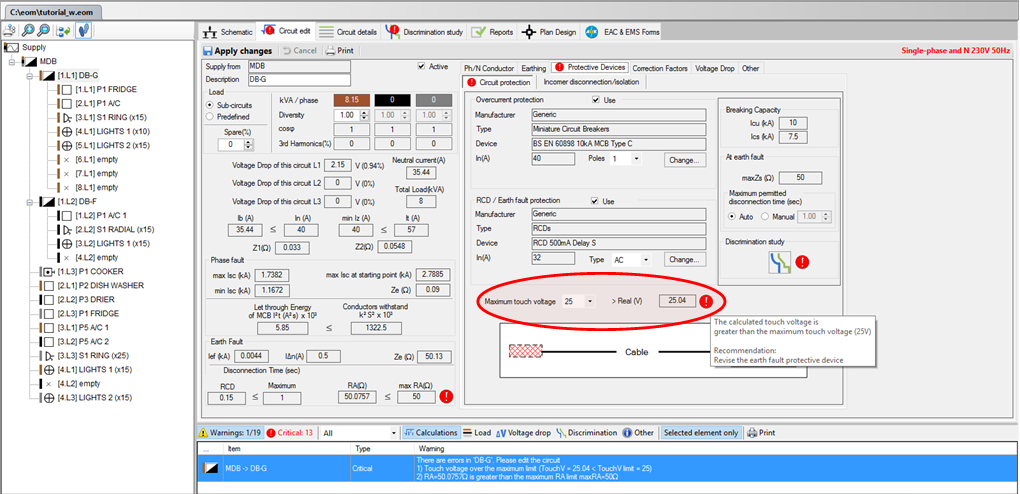Touch Voltage Limit Check
The touch voltage is used to determine the magnitude of the voltage to which the person at risk would be subjected in the event of an earth fault occurring in an installation. By assuming values of body resistance, the touch voltage concept can be extended to give an indication of the severity of the electric shock that could be experienced by that person.
The connection of all exposed- and extraneous-conductive-parts, either directly or indirectly, to a common terminal, i.e. the main earthing terminal of the installation, leads to the creation of touch voltages in the event of an earth fault and hence to the shock risk. In a correctly designed and erected electrical installation such a shock risk is not eliminated. Where the protective measure is automatic disconnection of supply then in the event of an earth fault, the speed of disconnection should be such that should the person at risk experience an electric shock it will not be a harmful one.
In order to resolve touch voltage warnings, it recommended that the engineer revise the CPC or the protective device. It is also recommended that the user make sure that the upstream circuits have been set correctly.
See the touch voltage calculations

